|
|
|
|
.
Low Noise, Tone, and Reliability—PedalSnake Excels
|
|
|
|
The Sound of PedalSnake "PedalSnake provides crystal clear tone. If it didn't, we certainly would never have been voted Best Accessory at Guitar Player Magazine. Most users tell us their rigs get quieter too. Mine did ... " Jody "KingSnake" Page |
 |
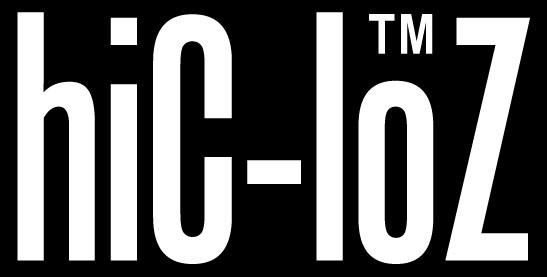 |
PedalSnake employs several noise-fighting methods, including the novel HiC-LoZ method. Over the years, marketing hype has generated many myths about cabling, leading many guitarists to wonder if PedalSnake can do all it claims.
|
The Two Biggest Myths About PedalSnakeThere are a couple of sources of misinformation that we have run across more than once, so we thought we would let you know. These two prime sources of misinformation are:
|
|
Sales Personnel in StoresPedalSnake is not sold in retail stores in the USA. We have a few international resellers who do a fine job. In the USA however, PedalSnake is available only at PedalSnake.com. |
|
|
|
So salespeople in stores, in order to push their own cable products, will often badmouth PedalSnake. Out pours rehearsed myths about how you can't run power next to audio, or the superiority of their boutique guitar cables, like the magic of "oxygen free copper", and..."time correction"! (Einstein may have to rewrite the Theory of Relativity for this last one).
In reality, guitar cables are a much simpler subject than the cable industry would have you believe. If you do things right, it really doesn't matter to your sound whether you use a $10 cable or a $100 cable. |
 |
|
|
See More About Cable Myths below.
|
|
|
.
Internet Trolls |
|
"Experts" love to weigh in and impress folks with their technical expertise, usually by warning folks of the dangers of a certain venture. |
 |
|
There's more, but we don't want to reveal our trade secrets! ;-) In fact, one has to try pretty hard to get a power cord to corrupt audio in a cable, no matter how close it gets (guitar pickups don't count!). Try it sometime.
Also, as with any change you make with your rig, it is possible to make mistakes when setting up your PedalSnake system. And we always fix these—but you have to contact us! Unfortunately, some of those who make errors never ask us for help, and just assume PedalSnake is the problem, return it (within 30 days), and their "valuable" experience goes out to every forum on earth. Trolls like this can hurt all kinds of products, but it can be especially damaging to a product like PedalSnake, which is a new way of doing things. Folks often wonder if it will be noiseless, and sound good, etc., and will look to the internet for answers. So be discriminating in what you read. |
|
But you can easily search and find that the vast majority of PedalSnake users are thrilled with the clean pedal area, fast setup, crystal clear tone, and lower noise.
. And when you first get a PedalSnake in your hands, and set it up, you will see how really simple it is. And this site is chock full of simple, helpful info to help get you get that done.
.
So trust us, if you read something bad about our product, it is because something was not done right. And whenever that happens, we make it right. If not (which is almost unheard of), you are welcome to a full refund. |
|
|
As far as the myths, these are the two that seem to get repeated most often:
MYTH #1. PedalSnake uses substandard cableAll PedalSnake cables are high quality. But because our BaseSnakes are multi-channel "snake" cable, and don't look like traditional guitar cords, folks get the wrong idea. |
|
Traditional guitar cords usually have fat cable, and heavy armored plugs. This is done mostly to project a "robust" image, as if "bigger is tougher", or "bigger let's more sound through". Cable thickness has little bearing on anything. In fact, some of the better cables out there are thin.
But with a snake cable, the "breakouts" must be thin, or the overall snake would be too thick to be of much benefit. This is what folks don't understand when they see a PedalSnake and say "I don't like the thin cable, I don't trust it to last, it looks cheap". Well, every sound man in the biz will tell you, this is just the nature of snake cable. |
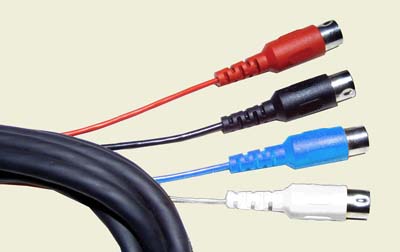 |
|
.
Similarly, we have also see some huge plugs out there, meant to project a tough image. True, a robust plug is necessary for a guitar cable. They are often stomped on and abused. But size has little to do with toughness. Our favorite is still the relatively small Switchcraft 280.
|
|
 |
|
.
What is important are the solder joints and strain relief. So a robust "look" may not be as robust as it seems.
. |
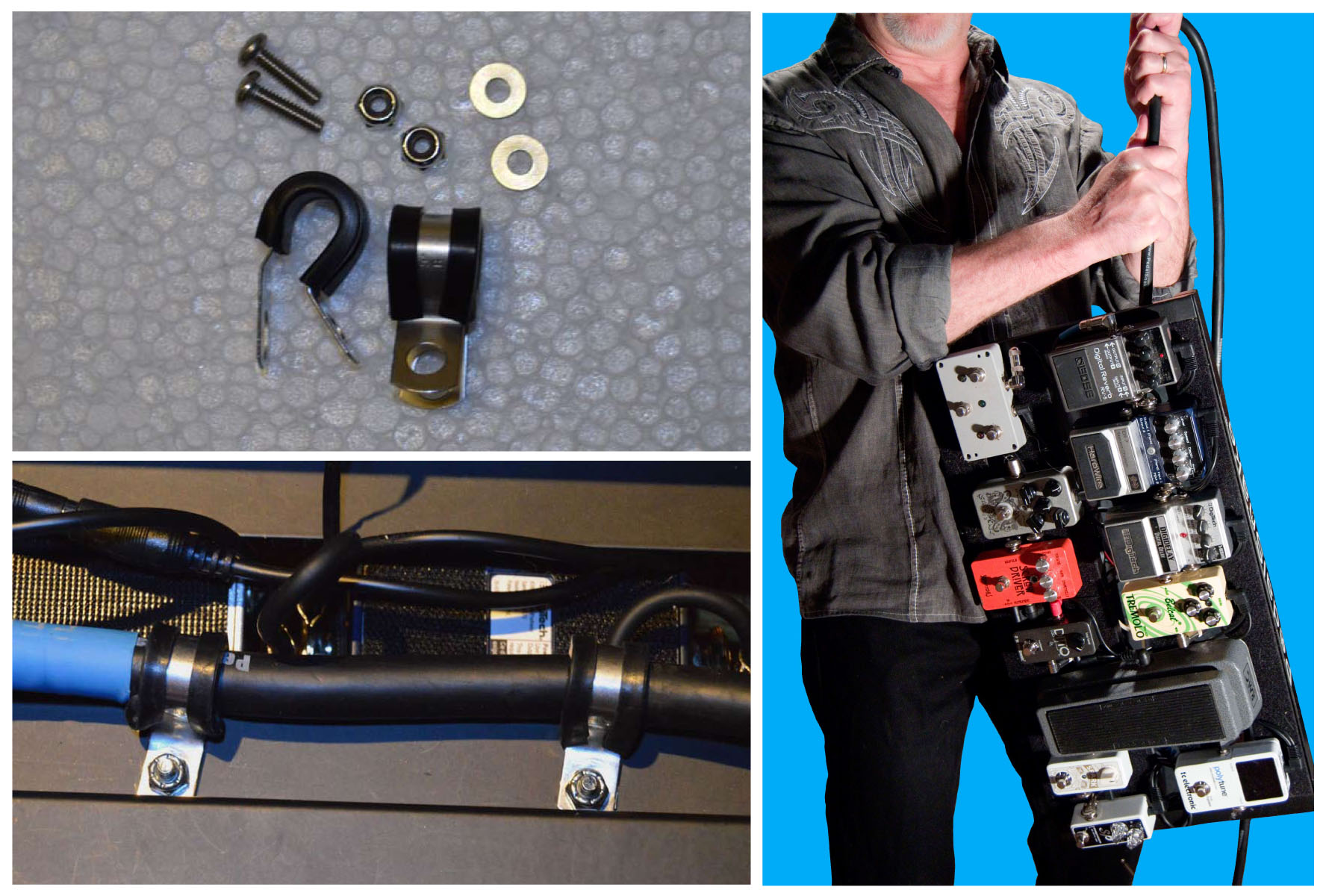 |
And with the weight of any snake, it is just common sense to use proper strain relief at the ends. Don't hang the heavy snake from the connectors! With PedalSnake, our smart, well enginerred Tour Prep Accessories make it easy for your PedalSnake system to be bulletproof—and fast. |
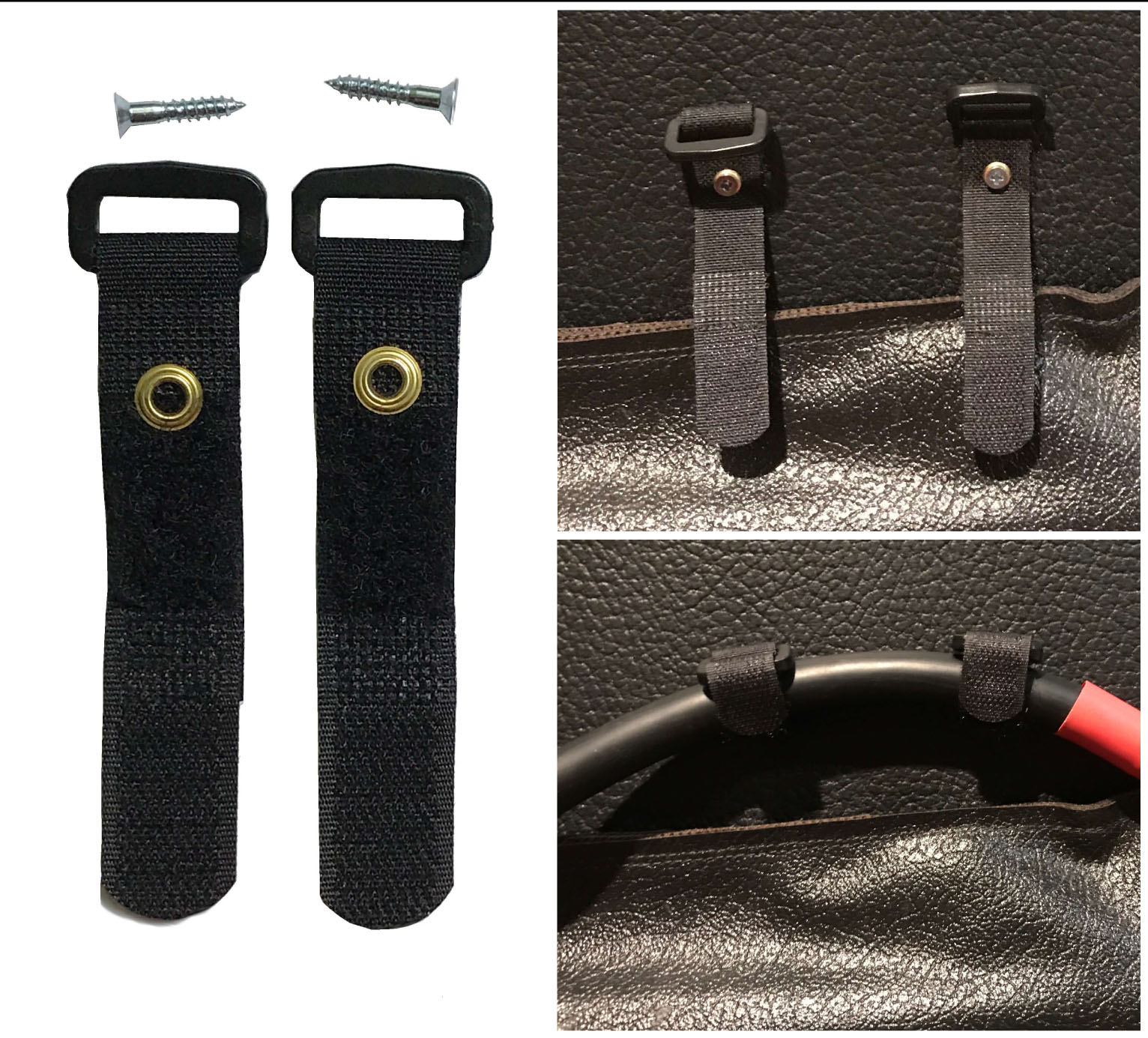 |
|
.
The Bottom Line: PedalSnake has an excellent record for reliability, and we honor our One Year Warranty. But again, don't take our word for it. Ask our customers.
|
|
|
|
|
NOTE If you are a PedalSnake user and find yourself with nothing but "true bypass" pedals (this is increasingly rare), and you don't want to trade any out for a buffered alternative, you can find quality, low-cost, "always on" buffers. These are not "effects" pedals. As long as they are powered they stay on, eliminating the need for an on-off switch, so they can be very small. CMAT Mods makes a good one. |
|
|
|
Preserving Tone with PedalSnakeAround 2004, an early PedalSnake model was tested in our hometown of Raleigh NC. One boutique guitar store in town, with several tone freeks in house, allowed us to do a blindfolded AB test. Nobody there could tell the difference between PedalSnake and an 8 foot guitar cable costing $200 (we won't mention the brand). |
|
|
|
The HiC-LoZ™ MethodPedalSnake has pioneered a new revolutionary method of pedal cabling. Traditional guitar cables have always been low capacitance (low C), because high impedance guitar pickups required this. But once you introduce the low impedance (low Z) output of an effects pedal, then a high capacitance (high C) cable actually becomes better, and you are free to use an ultra-low-noise shielded twisted pair cable. |
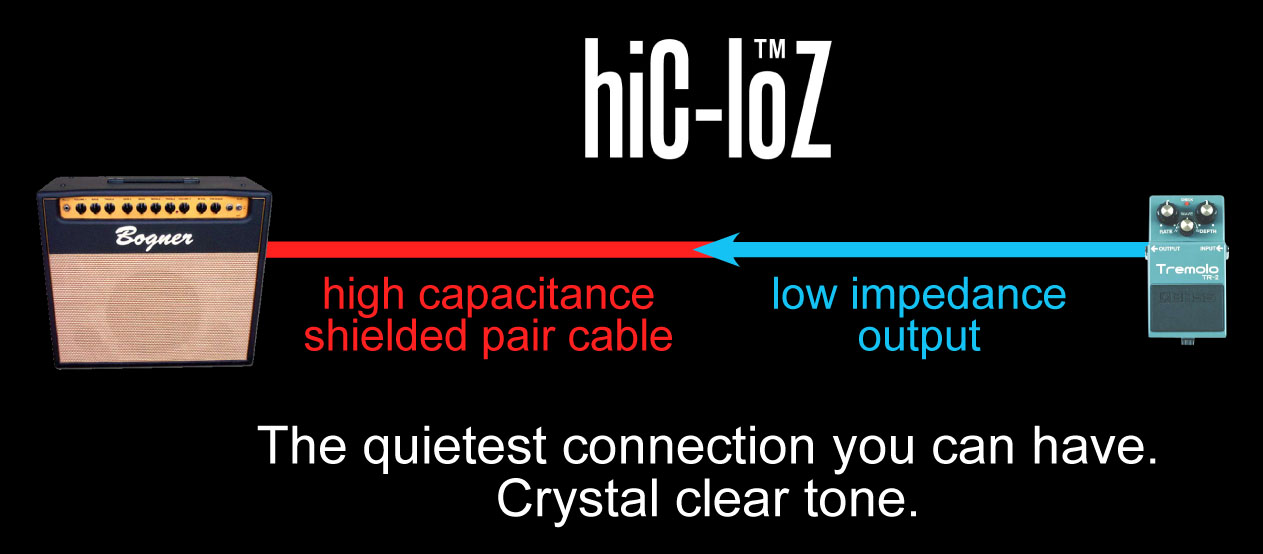 |
|
|
This is because a Lo-Z output driving a Hi-C cable not only produces crystal clear tone, it is also the quietest connection you can have.
|
 |
|
.
You don't even need a buffered effects pedal. You can find good, "always-on" buffers that are small, and just provide a lo-Z buffer. They run on 9V, just like your pedals, but have no on-off switch, which means they cost less, and can be very small, taking up less space on a pedalboard. CMAT Mods is one of several who make a good always-on buffer.
|
|
|
. How is HiC-LoZ a Good Thing?Good tone is about frequency response. But too much frequency response can actually be a bad thing. High frequencies from light dimmers, color TV's, neon lights, or even AM radio stations, find an easier path into your sound. These are known as RFI: Radio Frequency Interference.
. |
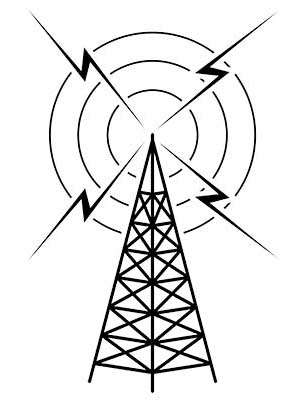 |
|
A low-Z output device, like a buffered pedal, will safely route RFI to ground better than a hi-Z circuit. It is also true that actually limiting the frequency response of your cabling can help.
The highest frequencies that electric guitars can produce come from single coil pickups, like in Strat's and Tele's. The chimes they prodcue can reach up to about 10 kHz. So ideally, you want cabling that is capable 10 kHz, but not much more. This way, you capture all the sound while rejecting the most RFI. LowC cables were necessary with high impedance guitar pickups. So folks got the impression that the lower the C, the better. But this is not true. You want it just low enough to preserve tone, and no more. Very LoC cables (besides having problems with microphonics) can create a frequency response much higher than what is actually needed, especially with LoZ output pedals...as much as 50-100 kHz ! So RFI (radio frequency interference) has an easier path into your connections. The amp may down-modulate the RFI (like an AM radio) into the audible range, and you hear the noise (or an actual radio station). This is why PedalSnake's HiC lines reduce noise. You need the LoZ buffer to preserve tone with a HiC cable, but the buffer also soaks up RFI better. And with the HiC cable, you limit extreme frequency response better, rejecting RFI. .
What LoZ buffer pedal should you use with PedalSnake?
.
It really doesn't matter. Most pedals like Boss (and others) are buffered, even when turned off. (Even true bypass pedals are buffered when they are on.) Most all pedal buffers are high-fidelity circuits, with low noise and low distortion. Something as simple as a Boss tuner works fine.
But you should not to use too many buffers, as that could begin to degrade tone. A good practice is to use no more than 5-6 in your total signal chain (FX loop included). |
More About Cable MythsAll the hoopla about guitar cables and tone is just that. Hoopla. It has little basis in reality. You can get a good 15-foot guitar cable for $10. You can spend more, a lot more, but it is doubtful you'll be able to tell the difference in a blindfold AB test.
Try it sometime with one of your friends that is bragging he spent $125 on his 12 foot "magic dust" cable, with "time correction" and "oxygen free copper". Whip out a decent 15 footer that costs $10, and see if they can tell the difference blindfolded! We're telling ya folks, unless something else is not being done properly, they won't be able to tell. If you just do a few basic things right, guitar cabling should have no effect whatsoever on your tone. Preserving tone is about two things, and two things only:
Cable Capacitance (C) All cables have capacitance. The longer the cable, the more capacitance it will have, and the lower the output impedance driving the signal must be to preserve tone. Output Impedance (Z) The pickup or pedal, or whatever is driving the signal into the cable, has an output impedance (Z). Higher impedance (HiZ) has less abilbity to drive cable capacitance without tone loss. Lower impedance (LoZ) can drive more cable with no tone loss.
A guitar pickup's is HiZ, 6,000 to 14,000 ohms. The output buffer in a stompbox is LoZ: 200 - 2,000 ohms. So using a buffered pedal, as opposed to a guitar pickup, means you can drive at least 3 times more cable C without tone loss. If your Z and C (actually Z x C) get too high, you lose high-end treble response. That is all that "tone suck" is. Lack of treble. Period. For more, see our article "True Bypass Truths" in Pedal Rig Tips. |
Keeping it QuietThere are several reasons why PedalSnake can reduce noise in your rig.
|
|
Shielded PairsTraditional guitar cables are coax cables--a single conductor surrounded by a shield. PedalSnake's patented wiring scheme employs a twisted pair of wires in addition to a shield. Right away this wiring offers an extra level of noise rejection. But there is more... |
 |
HiC-LoZOur shielded wire pairs are also higher capacitance (Hi-C). In the past, it was thought guitar cords had to have low capacitance. This was to preserve tone with high impedance guitar pickups. But we discovered that our shielded pairs with higher capacitance, when combined with the low impedance (Lo-Z) output of a buffered pedal, not only preserve tone, but become the quietest connection you can have.
For more about why this is, see How Is HiC-Lo-Z a Good Thing? above. |
 |
No TransformersPedalSnake allows standard power supplies to be quieter than expensive board-mounted supplies. Player's that elect to use PedalSnake's Low Voltage Method move their power supplies back with their amp, away from pedals. This prevents transformer noise from being induced into the pedals' electronics.
There is a demo of this at the PedalSnake Channel on YouTube. See P-Lines and Power, at about the 0.26 mark. While it is true that there are some very good (and expensive) power supplies that can be quiet right next to pedals, there is nothing quieter than no transformers at all near your pedals. This is why high-end studio consoles have external power supplies. |
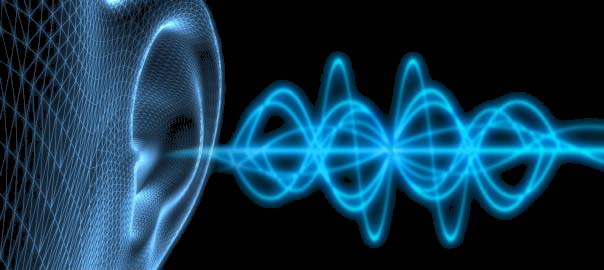 |
Star GroundingThe PedalSnake Low Voltage Method also allow's star grounding, which means your amp and your pedals' power supplies can plug into the same power strip. This common ground point yeilds a "tighter ground" to reduce ground loop hum and buzz.
|
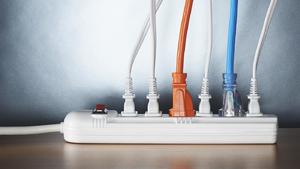 |
PedalSnake's ReliabilityA Myth Was BornMany years ago, when electric guitars and pedals were in their infancy, a large well-known dealer of electronic parts (we won't mention their name) offered cheap 1/4" guitar cables with molded plugs. Poor guitarists who couldn't afford much bought them.
But they shouldn't have. If you were lucky, these cables would last about an hour and a half. |
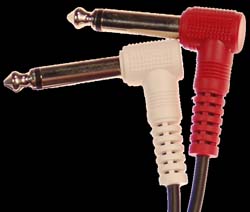 |
|
This, of course, served to give molded connectors a bad name, and it stuck. Even though today most every plug you see...from AC power cords, to CAT2, to USB, to RCA audio...are all molded.
Except guitar cords. Folks see a molded plug on a guitar cord and they still, after all these years, think "cheap". Some opinions die hard, even when false. Truth be told, a hi-quality molded connector can be more reliable than a soldered metal plug. Our compadres at Planet Waves agree. In the rare event one does fail, you still do the same repair as you would with a cable with metal plugs, Unless you have your own injection mold machine, with the proper tooling, you just solder on a new metal plug. |
Reliable MoldsFor any cable, good solder joints are where reliability begin. In molded plugs, the design of the mold is also critical. PedalSnake connectors employ a high-impact PE material.
Also, notice in the photo above: |
|
|
|
|
|
|
|
|
|
|
PedalSnake has been selling high-impact PE molded connectors since 2005, with very low failure rates, and offers a full One Year Warranty on all parts.
|
|
|
|
|
|
|
|
Why DIN Connectors?
|
We struggled for a long time over which connector to use for PedalSnake's configurable interface between the BaseSnake and Pigtails. We chose the 5pin DIN connector, for 4 very good reasons:
1. Rugged They can be manufactured with extremely sturdy molds. 2. High Insertion Force They do not come unplugged easily. |
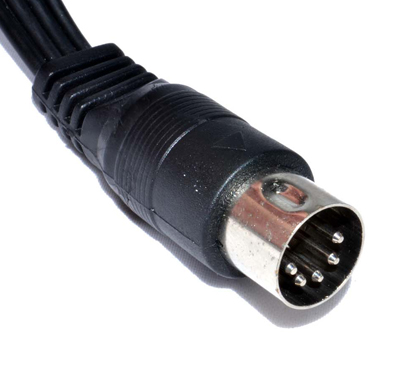 |
|
3. Ultimate Reliability They have a "pin and sleeve" contact arrangement that yields better electrical conductivity, and fewer failures.
|
|
|
4. Multi-Function Use Along with BaseSnake channels being configurable with Pigtails, bare BaseSnake channels can also be used for DIN applications, like MIDI, certain amp footswitches, etc.
.
|
|
PedalSnake® is a trademark of Stage Magic Inc. for the All-In-One Stompbox Cable. Copyright © 2012 Stage Magic, Inc.

